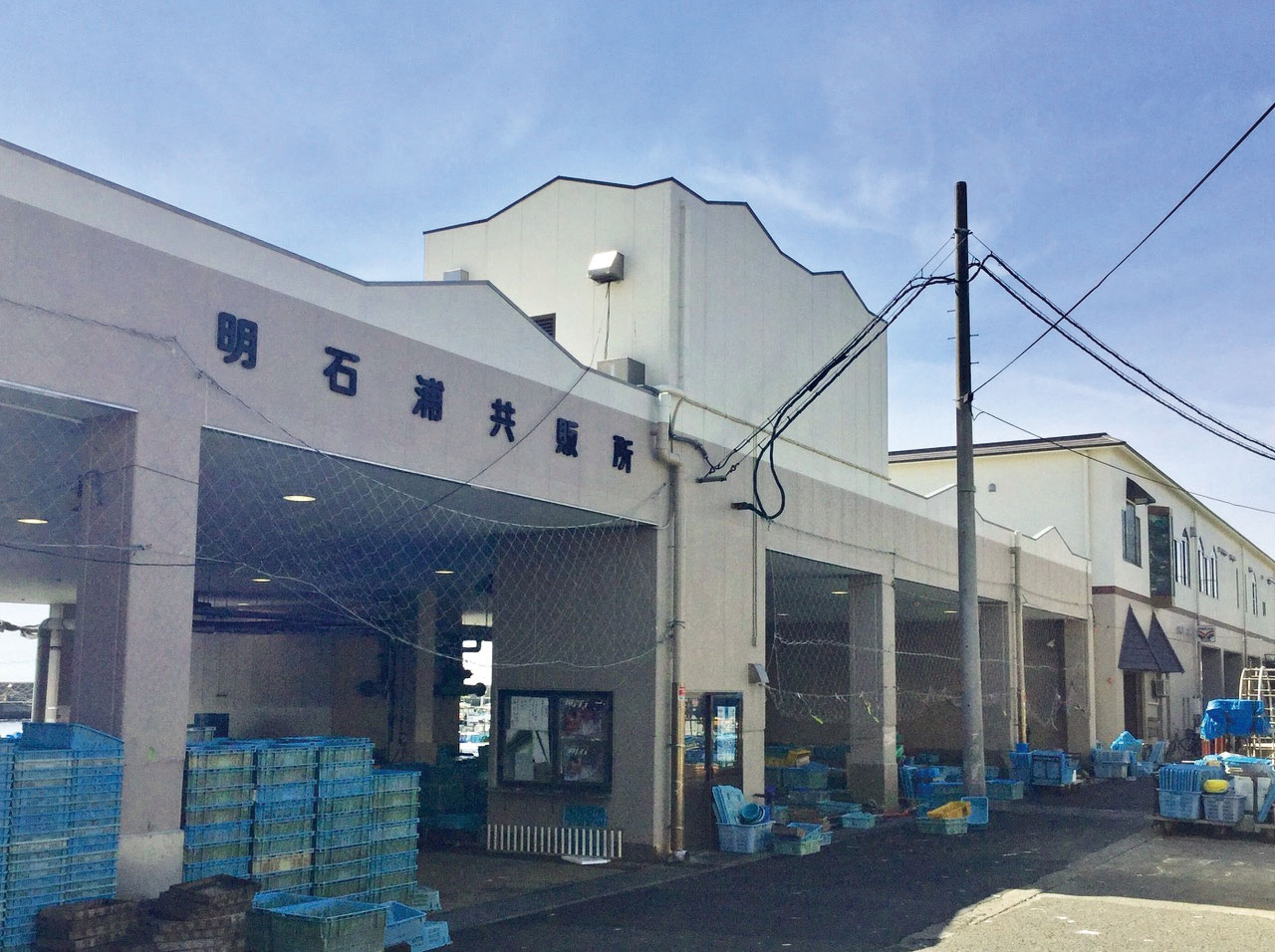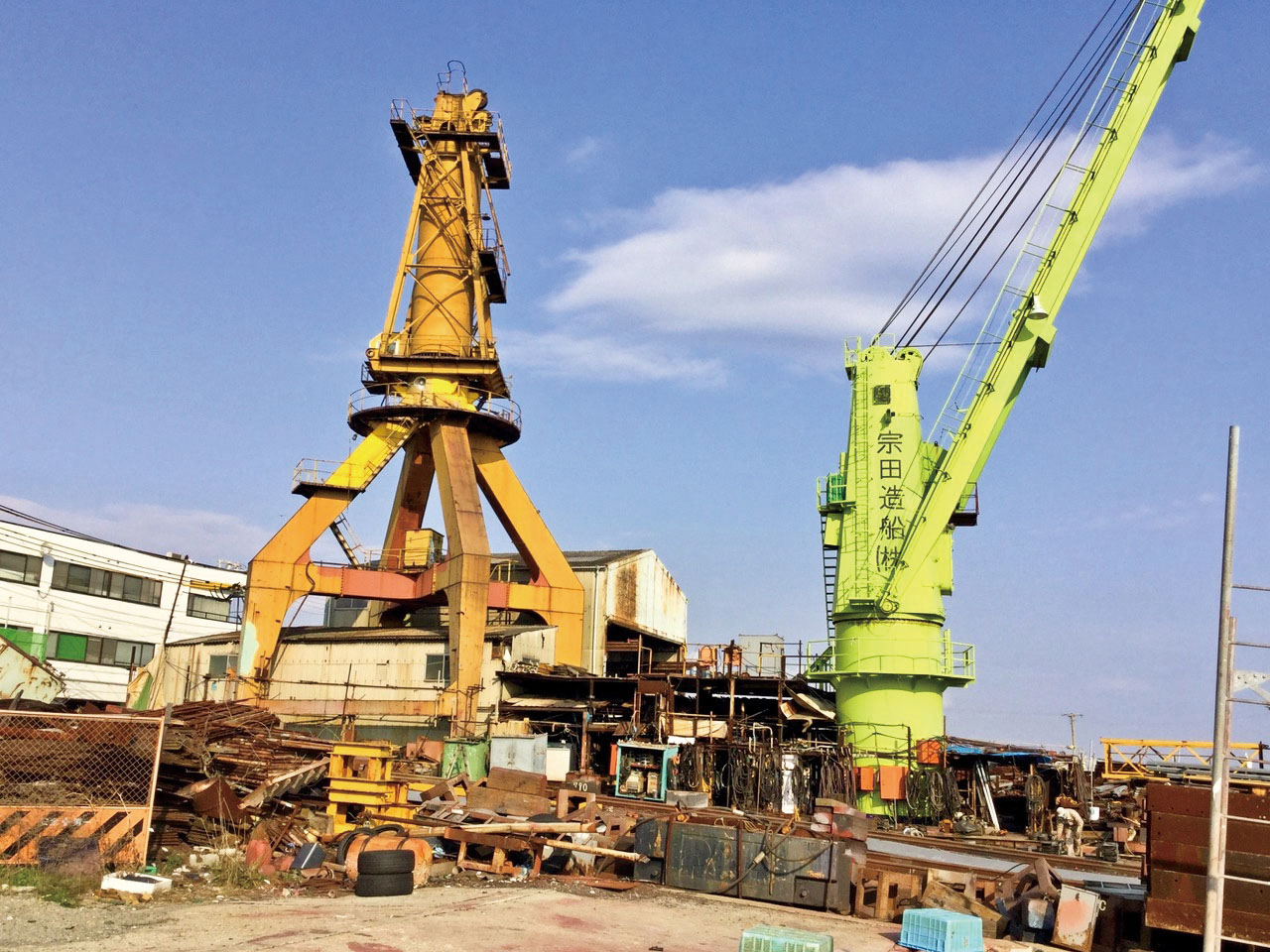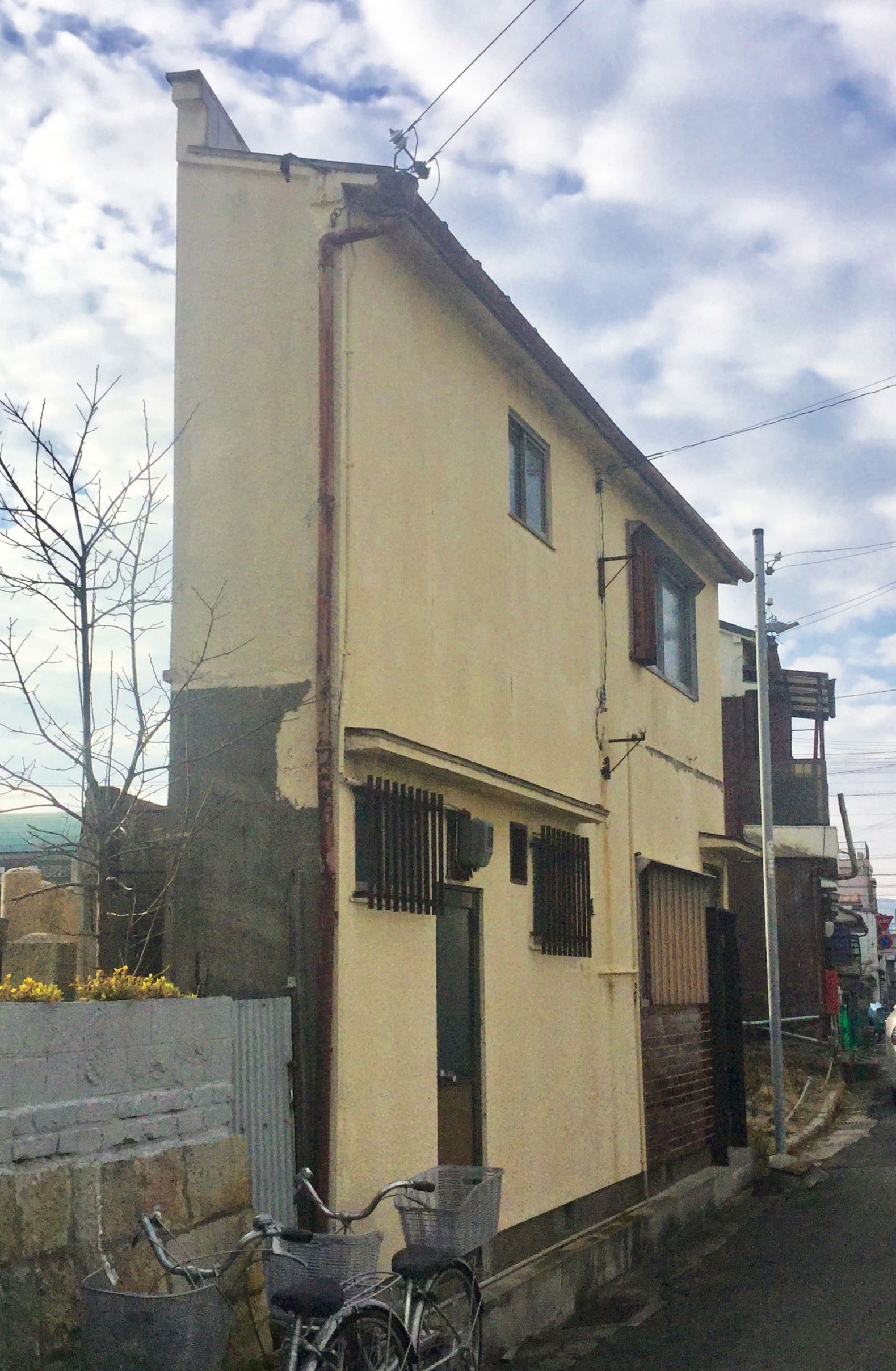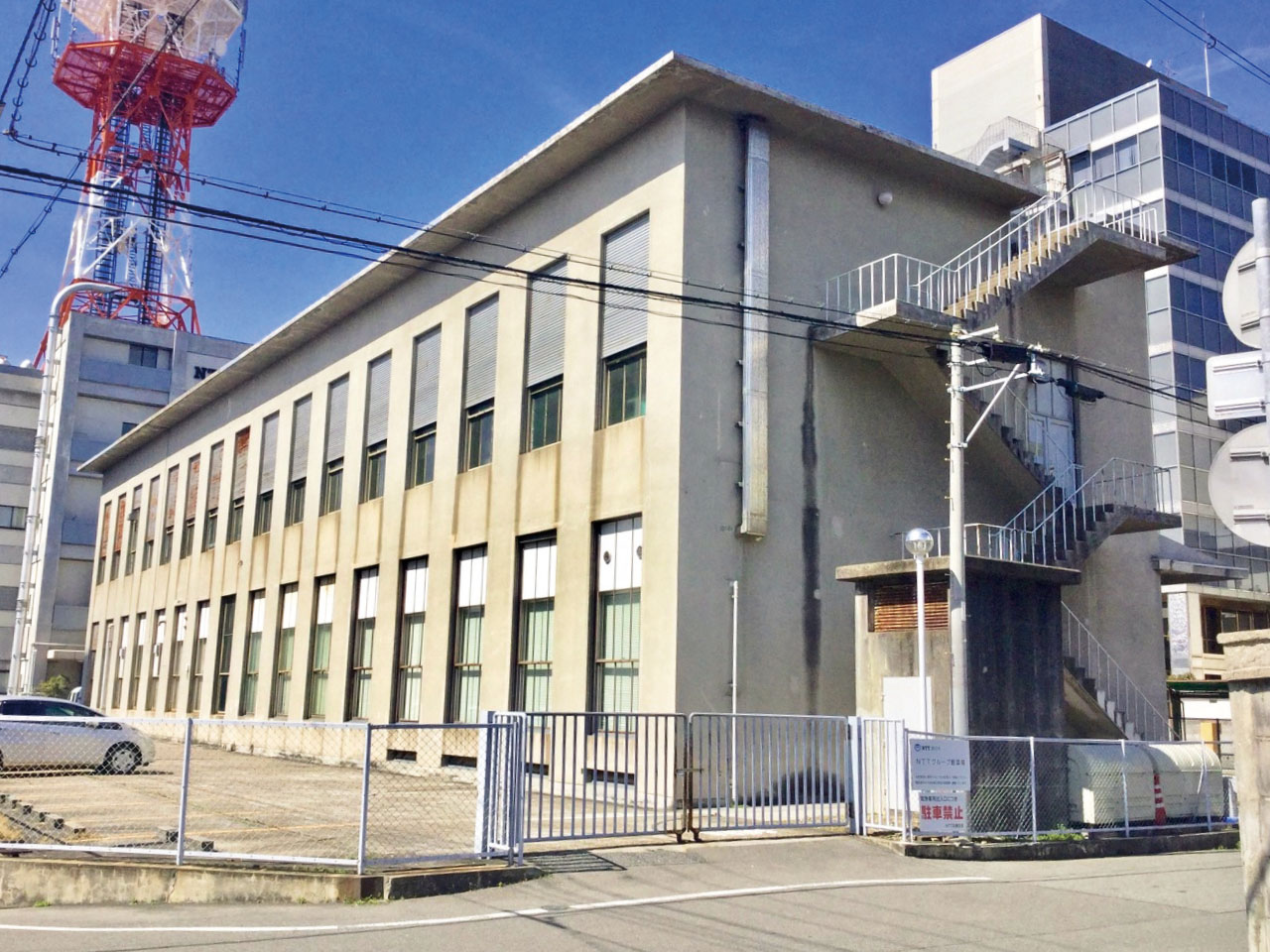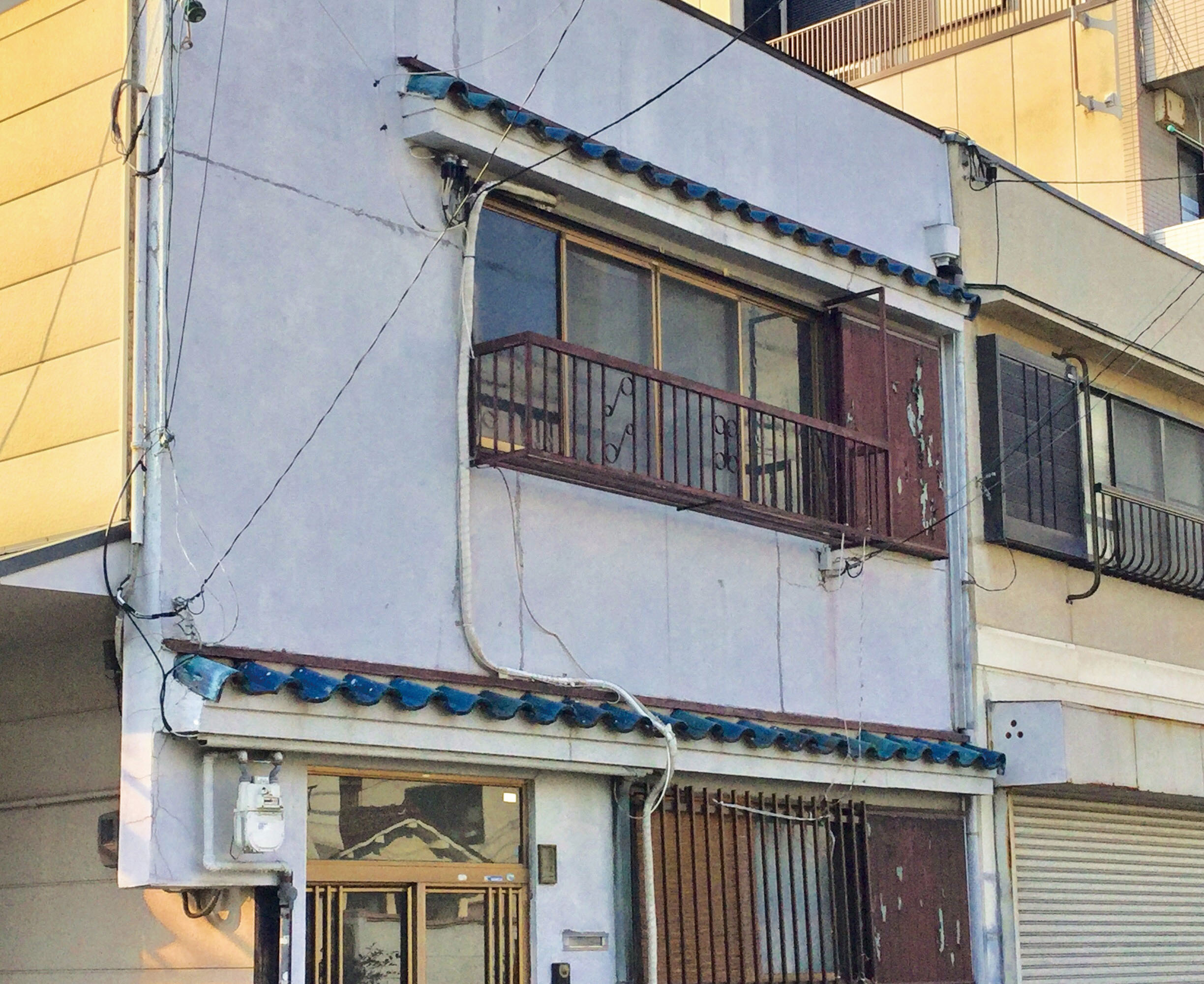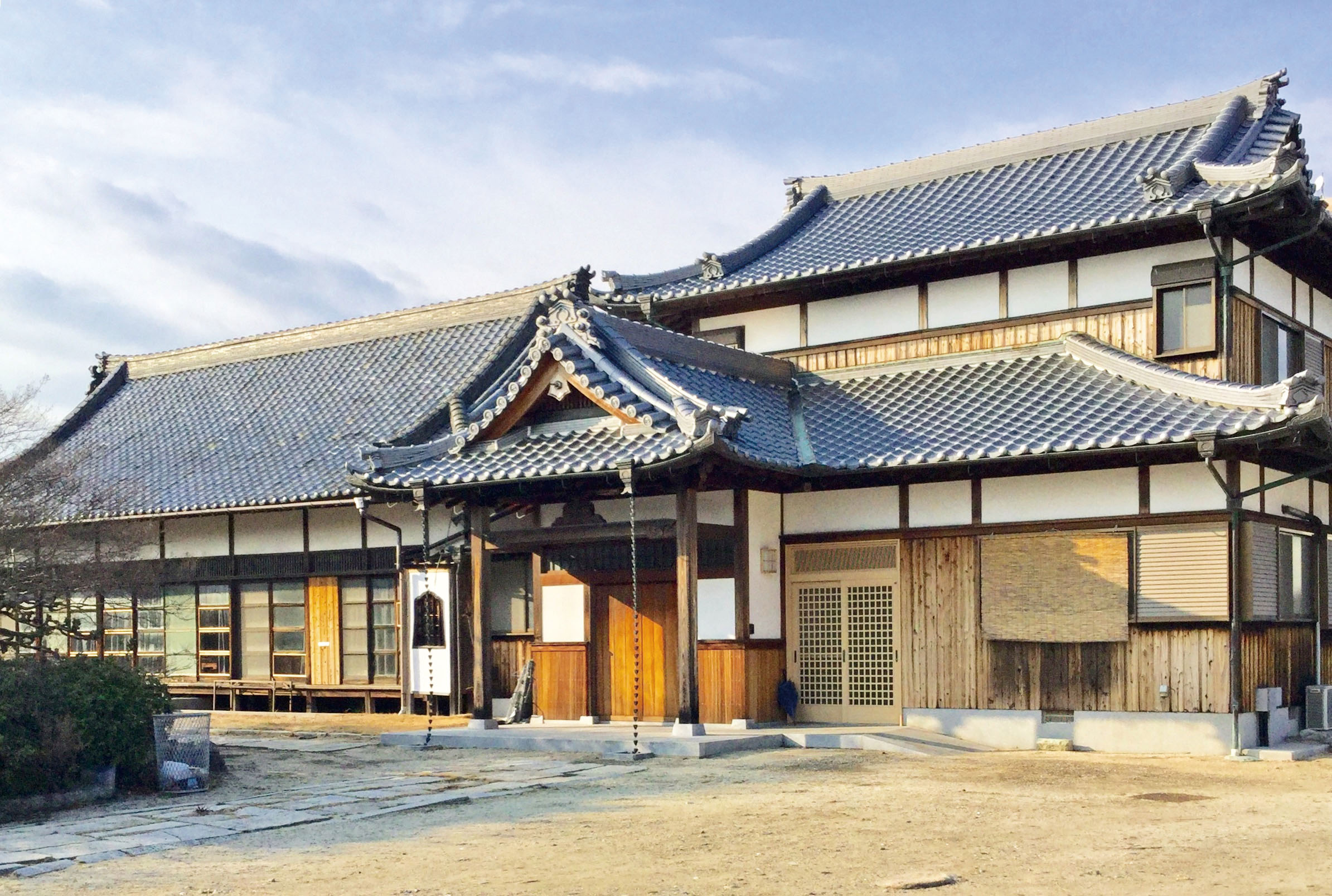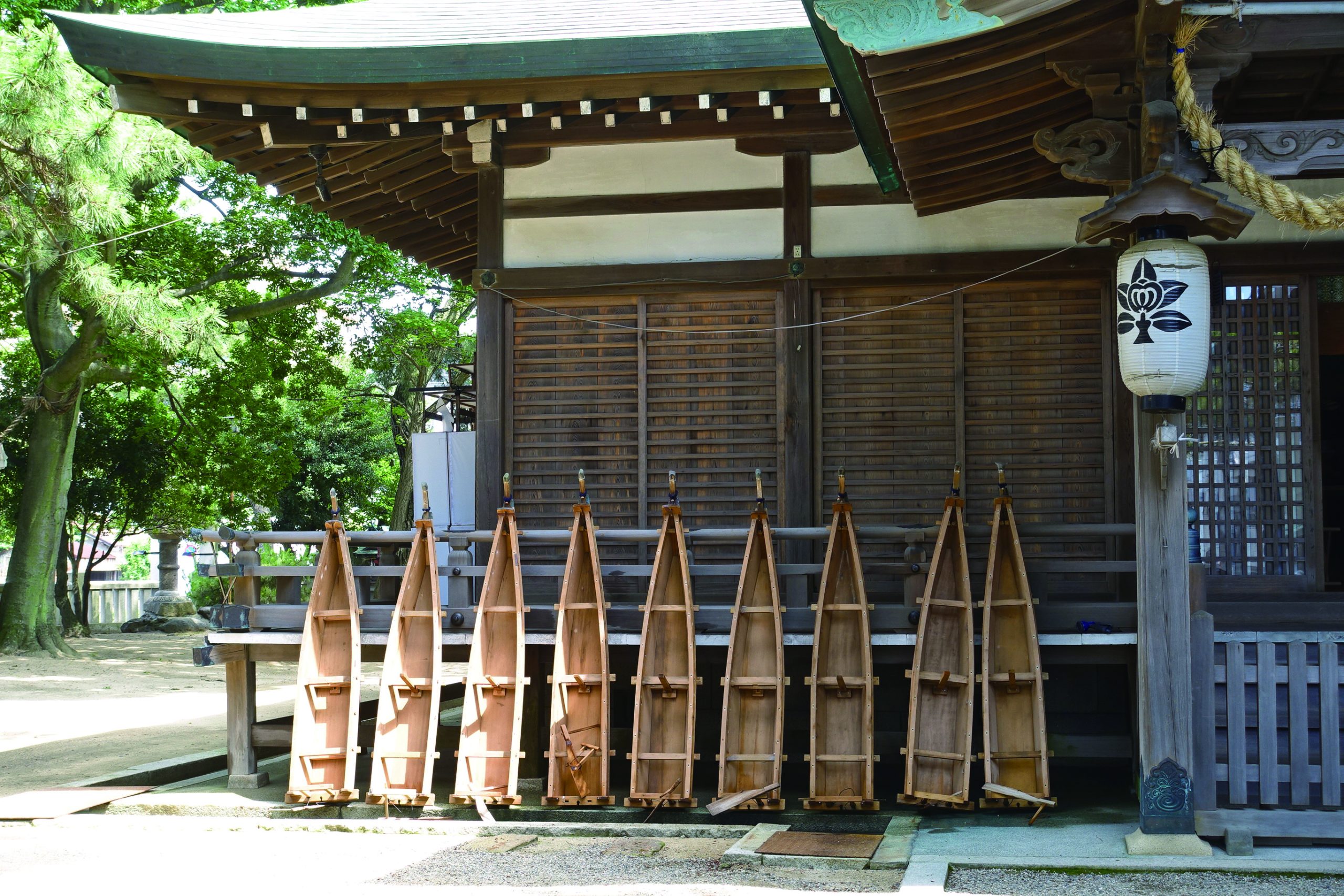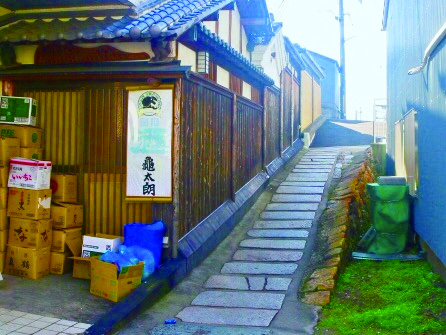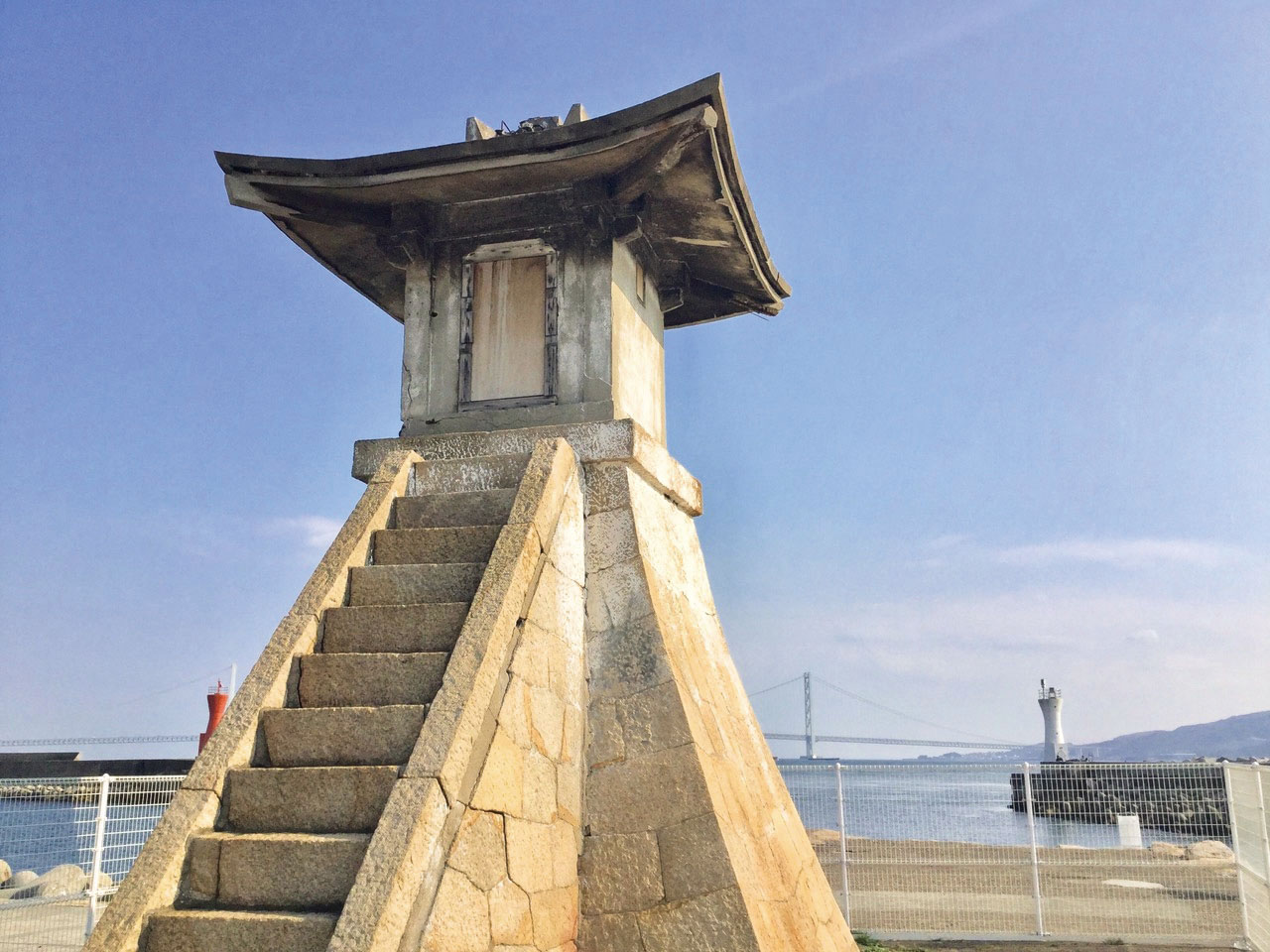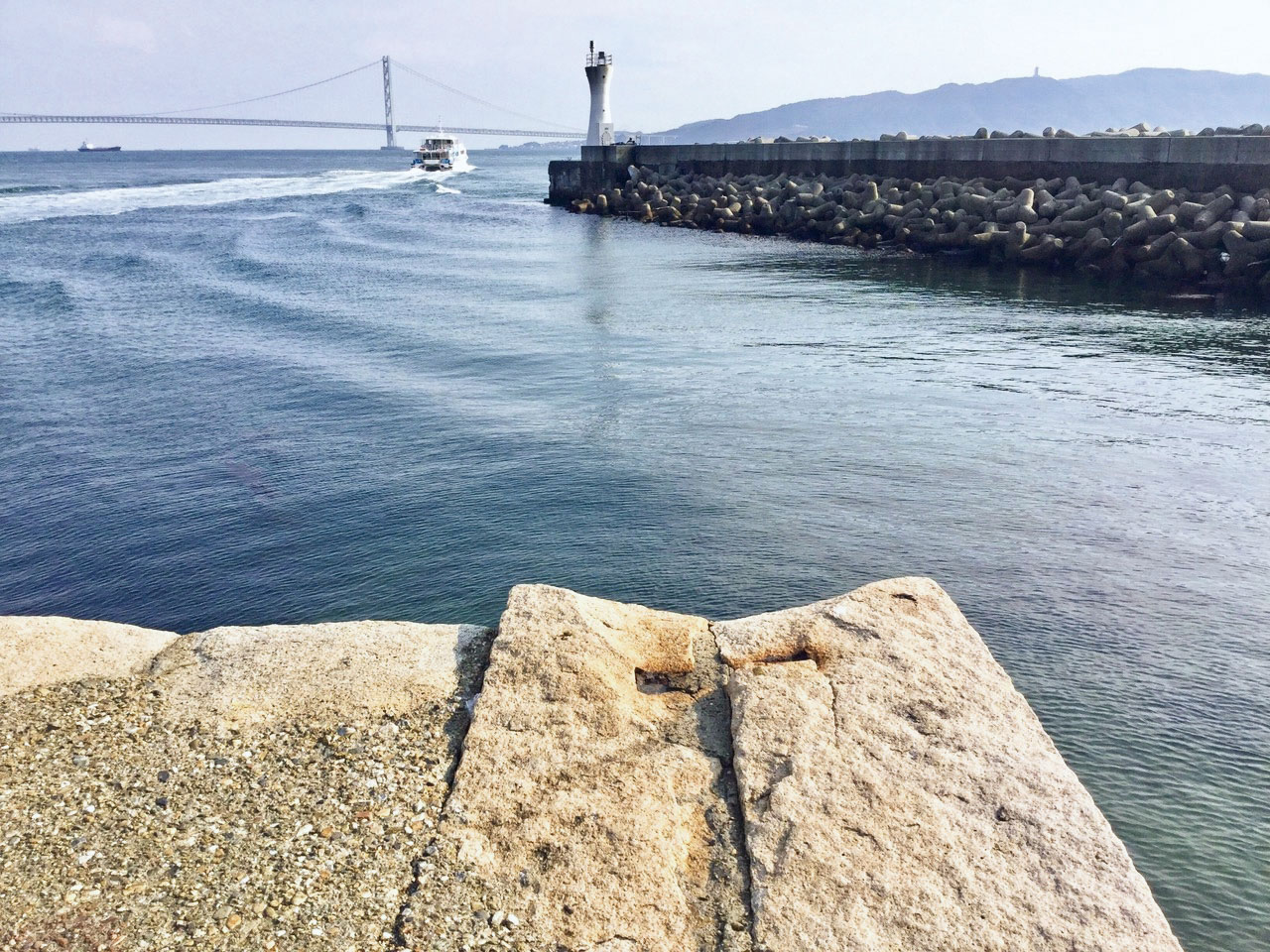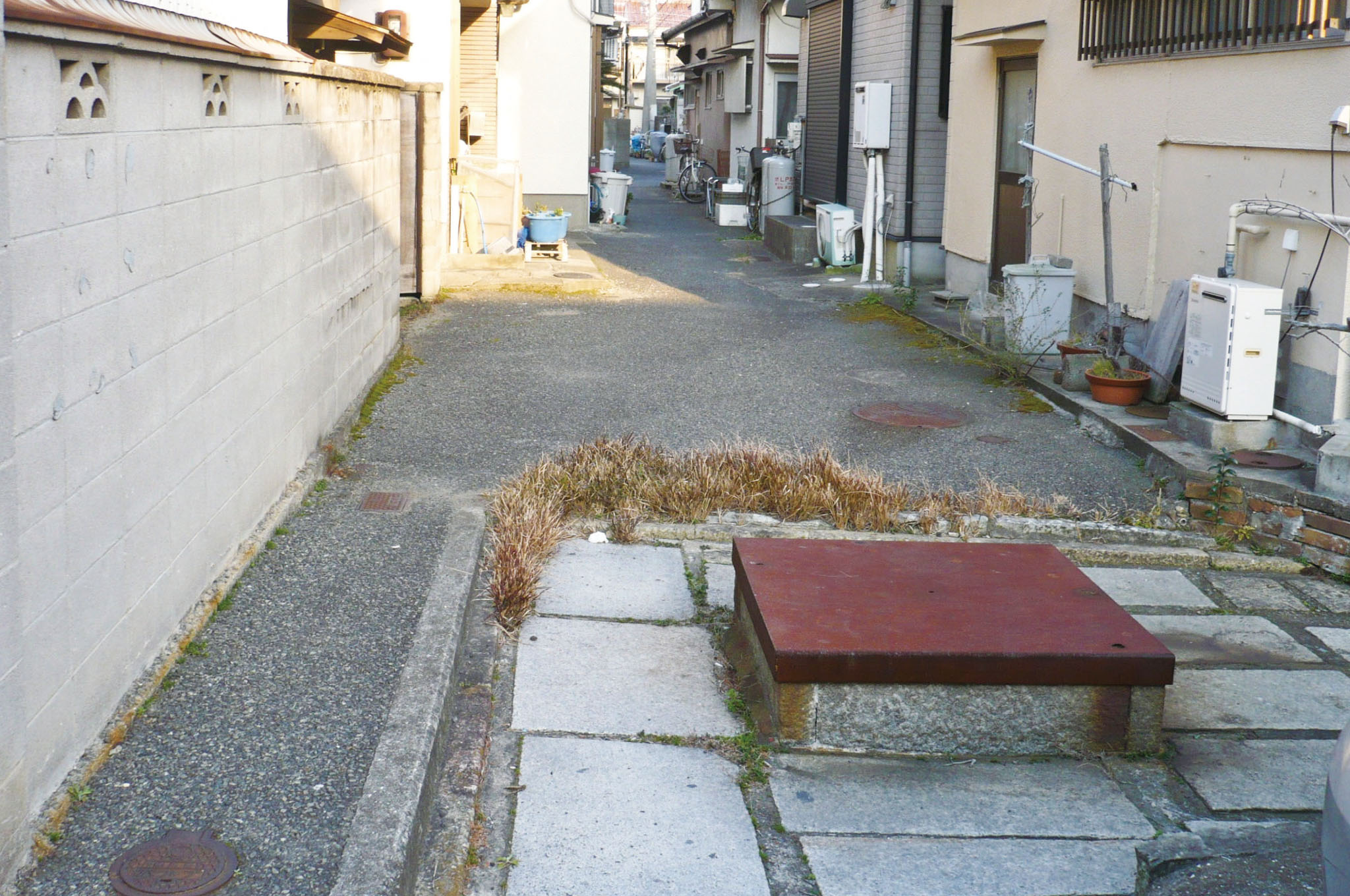
castle town
13. an abandoned well at an alley
We can see a very old well covered with an iron lid at the entrance to the alley. Rectangle flag stones are set around to the well and all the water could drain away on the sloping ground. Presumably residents there shared it in the old days.
